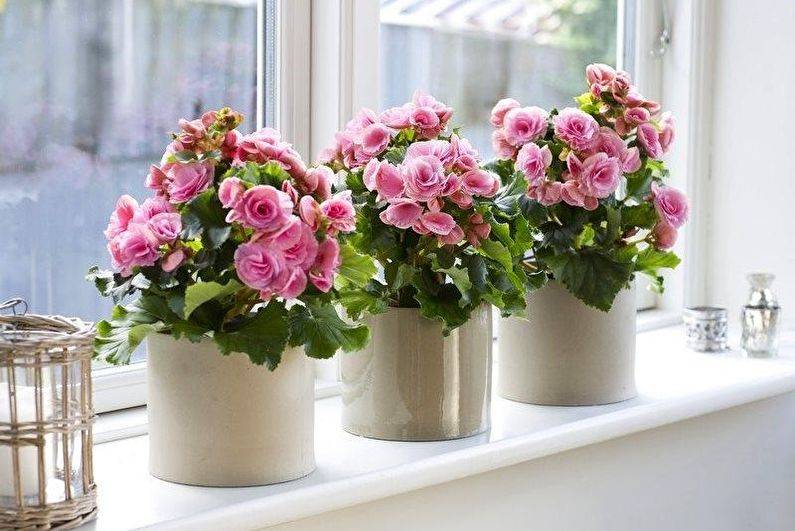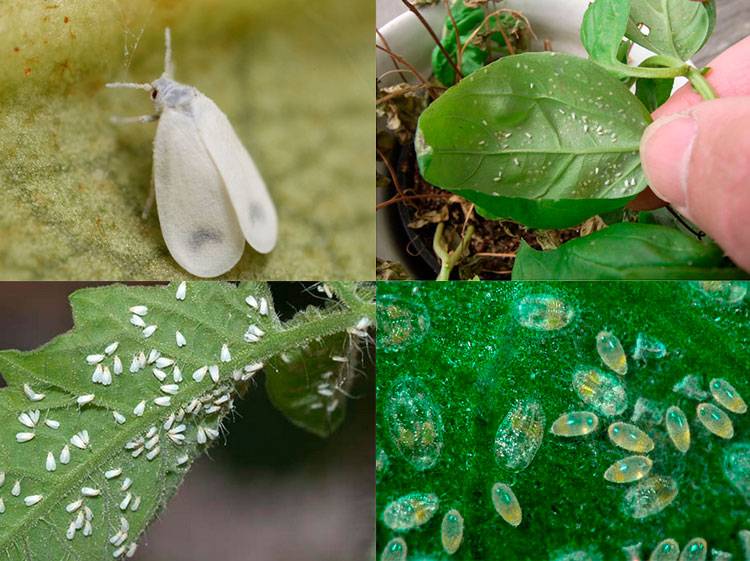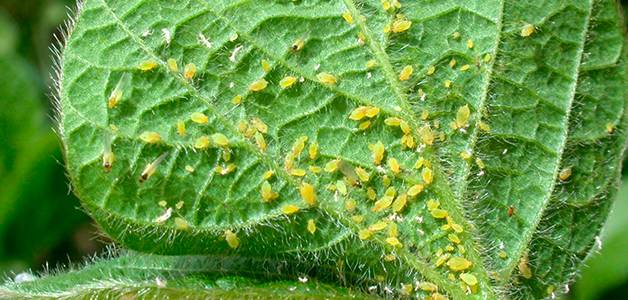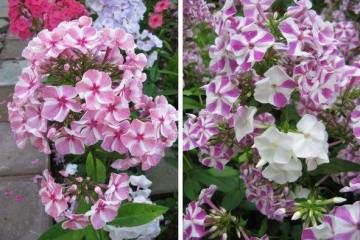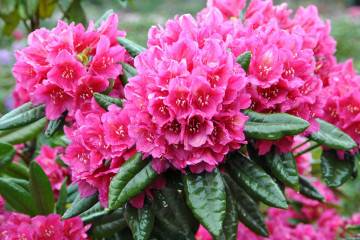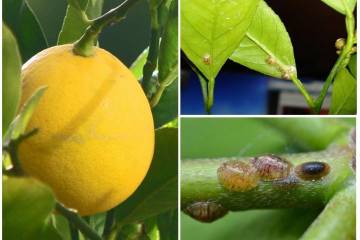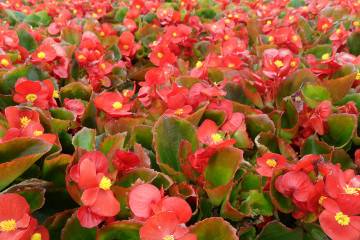What diseases of begonia can be - how to fight
Content:
Indoor begonia, belonging to the genus Begonia, has long won the love of flower growers. At home and in the garden, this beauty pleases with its flowering and foliage. Unfortunately, like other house plants, it can get sick or be attacked by pests. The article reveals the question of why begonia can die and what actions need to be taken to save it.
How often does home begonia get sick?
With proper care, optimal temperature, lighting and watering, the risk of disease and pest damage in home begonias is minimal. Poor-quality soil and diseased neighboring plants can become an additional factor of infection.
Methods of dealing with diseases and pests of room begonias are varied: from simple and gentle to the most radical. It all depends on the type of disease and the degree of damage to the plant.
The following are the main diseases of room begonia that growers face.
Leaves turn yellow, dry and curl
There can be several reasons for yellowing and falling leaves. The methods for solving the problem depend on the source.
- Begonia is not watered enough or is watered with cold tap water without prior settling. Regular plentiful watering with room temperature water that has stood for 48 hours will solve the problem.
- The plant was moved to another place, for example, from the room to the balcony. A sharp change in temperature, humidity, degree of illumination in some begonias lead to drying of the edge and curling of leaves. It is necessary to return the flower to its original place, feeding and removing the dead foliage.
- Air dried by central heating radiators will also cause yellowing and wilting of leaves. Spraying or a household humidifier can help you deal with low air humidity.
- Home begonia prefers bright, but diffused sunlight. If the lighting is excessive or insufficient, its leaves will turn yellow and fall off. The salvation will be the organization of the optimal light regime: either additional lighting or shading from the bright sun. In hot summer weather and when the air is excessively dry in winter, epin or zircon preparations can be used to activate the vitality of the plant.
Buds fall
Caring for begonia is quite simple, but mistakes in it lead to the fact that the plant can throw off leaves, flowers, unblown buds. To help the plant, you need to determine why begonia is shedding buds and take steps to eliminate them.
- Inappropriate conditions of detention. Too dry air, roots rotted from over-watering, direct sunlight, temperatures above 23 ° C in summer and below 16 ° C in winter are the main reasons why begonias fall off flowers and buds.
- Lack of nutrients. The problem can be solved by applying fertilizing with complex fertilizers, for example, Kemira Lux.When feeding blooming begonias and preparing for flowering, nitrogen is excluded; during this period, plants need phosphorus and potassium. A change of soil will also be beneficial. A composition of equal parts of sod, coniferous and leafy land with the addition of small amounts of peat and sand is considered ideal.
- Falling buds can provoke pests and diseases. The most common are gray rot and powdery mildew. To avoid their appearance, you need to observe the temperature and humidity regime. Fungicides should be used to combat. The appearance of pests, such as aphids and spider mites, can be another reason why the buds of tuberous begonia fall off. Parasites, sucking the juices from the leaves, lead to the oppression of the plant, and begonia can shed the buds. Insecticides and acaricides will help to cope with them.
Spots on the leaves
The appearance of spots on the leaf blades means that the flower is experiencing discomfort. If the plant is helped in a timely manner, the development of the disease and its death can be avoided.
Begonia leaves brown spots
There may be several reasons:
- insufficient watering and low air humidity. In this case, it is worth changing the irrigation scheme, increasing the air humidity;
- fungal infection of the substrate. In this case, brown spots appear on the leaves of begonia, which eventually become covered with a gray bloom. The diseased plant should be isolated, the soil changed and the plant treated with a fungicide.
White spots
They appear due to diseases:
- white weeping spots with a gray bloom - gray rot. Insulation, fungicide and microclimate optimization will help;
- white powdery spots are a sign of powdery mildew. Control methods are the same as for other fungal diseases.
Yellow spots and rings, accompanied by deformation of the leaves
Unfortunately, the begonia is infected with the cucumber mosaic virus.
Diseases of flowering begonia
During the flowering period, begonias are even more demanding in terms of maintenance and care. Budding, flowering, seed formation require an increased consumption of vitality. Even a slight deviation from the norm will cause illness.
- Withered or dry leaves - non-observance of the humidity regime. The native of the humid tropics is very demanding in humidity, but is not resistant to rot caused by excessive watering.
- Yellow leaves - excessive moisture with a lack of heat. With this mode, begonias have problems with flowering, the leaves can turn red and curl.
- Root rot is an indicator of excessive watering. Urgently dry the soil and optimize watering, otherwise the flower will die.
- Decay of leaves, buds, buds. If at the same time the bases of the stems are healthy, then the plant is sprayed too often, which is contraindicated.
- Flowering begonias are affected by downy mildew (pernosporosis). Spores of this type of fungi are activated at high humidity of the air and substrate. With a disease, white fluffy spots appear on the leaves, quickly spreading throughout the plant and leading to the death of the shoots.
Leaves, stem, roots rot
Why does begonia rot? Various types of rot are fungal in nature and can be localized in different parts of the plant. Some fungi take over the plant for several days, and it is almost impossible to fight them. In simpler cases, flower isolation and surgical treatment with fungicides will help.
The cause of the occurrence of putrefactive processes is a violation of the growing conditions:
- excessive air humidity;
- spraying of water droplets on leaves, petioles and growth point;
- flooded substrate;
- lack of ventilation;
- insufficient lighting;
- the air temperature in the room is below 19 ° C in summer and 16 ° C in winter.
Other diseases
Begonias have several specific diseases and reactions to the environment:
| Problem | Decision |
| Young leaves are too small and pale | Feeding with nitrogen fertilizer is required. |
| Begonia leaves curl | Leaves begin to curl when it's too hot and dry. You need to adjust the parameters. |
| The plant in the kitchen has wilted | Poisoning by natural gas combustion products. You need to move the flower to a safe place. |
| Leaves fall in winter | Too cold. The temperature needs to be adjusted. |
| Bubbly specks. The leaves turn black. | Bacterial wilting. It needs to be treated with an antibacterial drug. |
Diseases that do not respond to treatment
Begonias have a number of diseases that cannot be treated. If their symptoms are found, the plant should be destroyed, the pots and window sills should be disinfected, and the neighboring flowers should be quarantined.
The incurable ailments include:
- infestation with nematodes. Discolored leaves, slugs appear on the roots;
- cucumber mosaic. Yellow spots and rings. The leaves are deformed.
Diseases due to pests and their destruction
Begonia is affected by a variety of pests.
- Spider mite. The leaves fade, lose color, begin to fade, a cobweb appears on the lower surface. Treatment with systemic insecticides will solve the problem.
- Nematodes. Their appearance will be indicated by influxes on the roots and lifeless leaves. It is better to destroy the plant immediately.
- Aphid. With severe infection, all leaves and buds can fall off. The plant will be saved by treatment with an insecticide, a strong soap solution.
- Greenhouse whitefly. Small white butterflies feeding on plant sap. 40 g of laundry soap dissolved in 10 liters of water will help to destroy the pest. Leaves with eggs and larvae must be destroyed before processing.
- Greenhouse thrips. The plant loses its decorative effect, becomes faded, lifeless, throws off its leaves. You can fight with soapy water or insecticides.
- False shield. The presence of a pest can be judged by the appearance of the insects themselves (brown scales) and sticky products of their vital activity on the leaves. The fight against scale insects is not easy, since the pests are protected by shields. A combination of mechanical brushing and insecticide treatment will work.
Traditional methods of pest control
The folk method of getting rid of aphids and spider mites: chop 15 g of onions and infuse in 1 liter of water for about a week. Treat the damaged begonia with a filtered solution every five days until the pests are completely destroyed.
Shag infusion mixed with celandine juice will help from thrips and aphids.
The false shield will be destroyed by an alcohol solution with soap: 15 g of liquid soap, 10 ml of alcohol and 1 liter of warm water. The solution is very aggressive, therefore, in order not to burn the plant, you need to conduct a sensitivity test on a separate leaf.
Begonia is a whimsical plant, it is not easy to grow it. However, if you study and follow the rules of care and maintenance, then begonia will delight you with the beauty of flowers and foliage for a long time.
